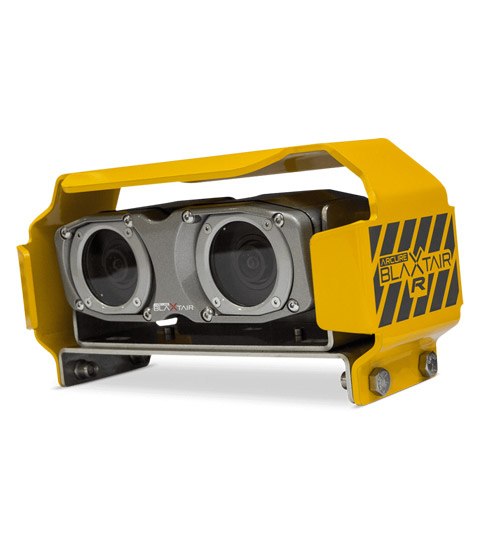Arcure partnered with CEA-List to develop a vehicle-mounted 3D camera, used to prevent accidents by detecting pedestrians around industrial and construction vehicles. The Blaxtair camera has been adopted by major international companies and industrial vehicle manufacturers around the world.
Arcure was founded in 2009 by two aerospace engineers, Patrick Mansuy and Franck Gayraud. Their goal: to improve safety on construction and industrial sites by developing a pedestrian detection and driver warning system for site vehicles. Arcure, confident in CEA-List’s real-time image analysis expertise, turned to the institute for support.
Arcure commercialized Blaxtair, a 3D pedestrian detection camera designed to be integrated into industrial vehicles, in 2011. The camera is the first of its kind, drawing on the latest in image processing and AI technologies.
Blaxtair has been adopted by major industrial companies like Colas, EDF, Suez, Vinci, Faurecia, and Veolia, and by equipment manufacturers including Jungheinrich, Liebherr, and Komatsu. The cameras are now used in some thirty countries around the world.

Industrial and construction vehicles have multiple blind spots, and while they generally move slowly, sudden movements are frequent. Machine operators are focused on the task at hand, meaning that they cannot devote their full attention to their surroundings. These factors combine to make collisions between mobile equipment and pedestrians a real threat, with over one thousand serious accidents recorded each year in France alone.
Integrated pedestrian detection cameras, designed to alert the driver to the presence of a collision risk, have a huge part to play in preventing accidents of this type.
The Blaxtair camera features stereoscopic vision, allowing it to reconstruct the space around the vehicle in three dimensions. Images are then analyzed in real time using integrated software. Developed by Arcure in partnership with CEA-List, the camera has the unique ability to differentiate between people and things, and only alerts the driver if a pedestrian is detected in the immediate vicinity of the vehicle. Designed to operate in difficult conditions—on uneven terrain, in vehicles which can make sudden and unpredictable movements in any direction, at night, in dusty environments, etc.—the system has proved to be extremely reliable in real-world settings.
Blaxtair draws on CEA-List’s real-time image processing expertise, using specialist recognition algorithms. This innovative technology is protected by eight patents.
Blaxtair Connect, launched in 2020, is an additional tool used alongside cameras to monitor accident risks on a site. This new solution uses predictive analysis techniques, applied to data collected by one or more Blaxtair cameras, to identify locations or times at which the risk of pedestrian collisions is highest.
Arcure and CEA-List have set up a joint R&D lab as a framework for long-term collaboration. R&D activity follows an annual plan set out by Arcure. The close working relationship between CEA-List and Arcure researchers encourages cooperation and leads to rapid operationalization of innovations.
Arcure is committed to ongoing development, ensuring that Blaxtair cameras remain at the cutting edge of detection technology. The latest version is due to be released in 2022.
“CEA-List’s clear understanding of our needs as a manufacturer and their ability to adapt to our specific requirements have been essential to our partnership’s success. The results-oriented researchers at the institute have provided us with the support and innovations we needed to improve our product. They help us to maintain our position as technological pioneers.”
patents
employees
2020 revenue:
cameras in use
Following on from the success of Blaxtair, Arcure developed a robust, high-resolution 3D sensor for industrial applications. Omega, released in 2018, is designed to be used in difficult working environments, and is ideal for robotic vision, object detection, and piloting applications, among others.
The company reported annual revenue of €7.8 million in 2020 from these two products alone, with two-thirds of sales on international markets. Arcure employs 60 people, including around 20 engineers and PhDs.
Based in Paris, Arcure has a subsidiary in Chicago and sales offices in Spain, Germany, and Hong Kong, making it a truly international company. Arcure’s products are made in France, at plants in Grossœuvre and Mercin-et-Vaux.
Arcure has been listed on the Euronext Growth market since 2019.